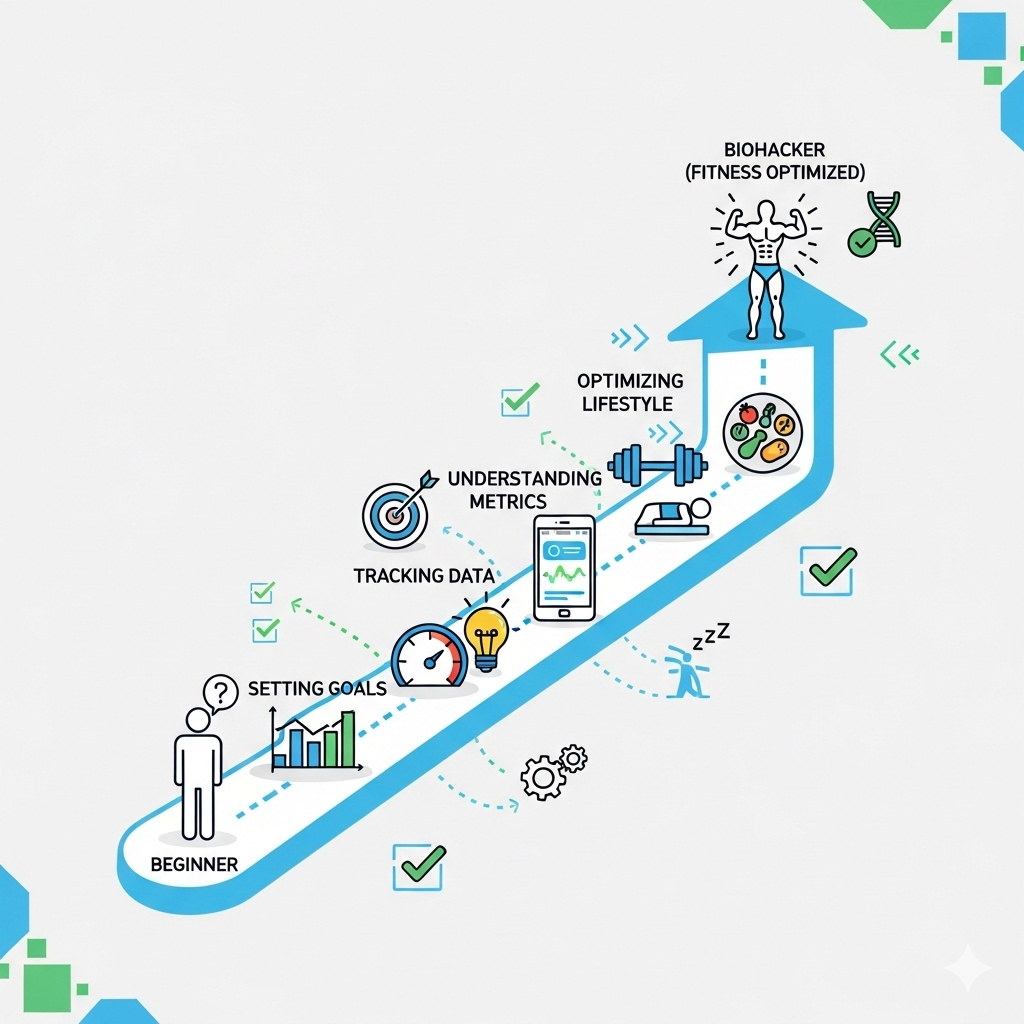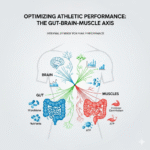The term “biohacking” might conjure images of futuristic labs, complex genetic modifications, or expensive, inaccessible technologies. While the field certainly encompasses cutting-edge science, at its core, biohacking is simply the art and science of optimizing your biology through small, strategic changes to your lifestyle, diet, and environment. For those looking to elevate their fitness, biohacking offers a personalized roadmap to unlock greater performance, accelerate recovery, and enhance overall well-being. This guide is designed for the aspiring biohacker, providing a clear, step-by-step approach to embark on your fitness optimization journey, proving that you don’t need to be a scientist to start making profound improvements to your health and athletic potential.
What is Fitness Biohacking (and Why Should You Care)?
Fitness biohacking is about taking an active, data-driven approach to understanding and influencing your body’s systems to achieve specific fitness outcomes. It moves beyond generic advice, recognizing that each individual’s physiology is unique. The goal is to become the best version of yourself by making informed decisions tailored to your specific biological responses [1].
Why should you care? Because traditional fitness approaches often hit plateaus or lead to burnout. Biohacking offers a path to:
- Personalized Progress: Instead of following a generic plan, you learn what truly works for your body.
- Enhanced Performance: Optimize energy levels, strength, endurance, and mental clarity.
- Faster Recovery: Reduce muscle soreness, prevent injuries, and bounce back quicker from intense workouts.
- Sustainable Health: Build habits that support long-term vitality and resilience.
Step 1: Self-Assessment – Know Your Baseline
Before you can optimize, you need to understand your starting point. This initial self-assessment is crucial for identifying areas for improvement and establishing a baseline against which you can measure your progress. Think of yourself as a detective gathering clues about your own body.
Subjective Assessment:
- Energy Levels: How do you feel throughout the day? Do you experience energy crashes? When are you most energetic?
- Sleep Quality: How well do you sleep? Do you wake up refreshed? How many hours do you typically get?
- Mood and Mental Clarity: How is your focus? Do you experience brain fog? How do you handle stress?
- Recovery: How quickly do you recover from workouts? Do you experience prolonged muscle soreness?
- Digestion: Are you experiencing any digestive discomfort, bloating, or irregularities?
Keep a journal for a week or two, noting these subjective feelings. This qualitative data is just as important as quantitative metrics.
Objective Assessment (Optional, but Recommended):
- Basic Health Metrics: Get a general health check-up. Blood tests can reveal insights into nutrient deficiencies, hormonal balance, and inflammatory markers.
- Body Composition: Use a smart scale or other methods to track body fat percentage, muscle mass, and hydration levels.
- Wearable Tech Data: If you have a smartwatch or fitness tracker, start paying attention to the data it collects: daily steps, active calories, resting heart rate, and basic sleep patterns. This provides valuable quantitative data about your body [2].
Step 2: Set Incremental Goals – Start Small, Build Big
One of the biggest mistakes beginners make is trying to change too much too soon. Biohacking is about gradual, sustainable improvements. Instead of aiming for a complete overhaul, focus on one or two small, achievable goals. This approach prevents burnout and allows you to build habits gradually [3].
Examples of incremental goals:
- Sleep: Aim to go to bed and wake up at the same time every day, even on weekends. Start by adding 30 minutes to your sleep duration.
- Hydration: Increase your daily water intake by one glass per day.
- Nutrition: Incorporate one serving of fermented food daily for gut health.
- Movement: Add a 15-minute walk to your daily routine.
Remember, consistency trumps intensity, especially in the beginning. Small wins build momentum and confidence.
Step 3: Implement Core Biohacks – The Foundational Five
While biohacking can get complex, there are fundamental areas that offer the biggest return on investment for beginners. These are often referred to as the
Foundational Five, and they are the best place to start your biohacking journey [4].
1. Sleep Optimization:
Sleep is the ultimate recovery tool and the bedrock of all performance. Without adequate, quality sleep, all other biohacks will have diminished returns. Focus on:
- Consistency: Go to bed and wake up at the same time every day, even on weekends, to regulate your circadian rhythm.
- Darkness: Ensure your bedroom is as dark as possible. Block out all light sources, including streetlights and electronics. Even small amounts of light can disrupt melatonin production.
- Temperature: Keep your bedroom cool, ideally between 60-67°F (15-19°C). A cooler environment facilitates the natural drop in core body temperature needed for sleep.
- Blue Light Reduction: Avoid screens (phones, tablets, computers, TVs) for at least 1-2 hours before bed, or use blue light blocking glasses if screen time is unavoidable. Blue light suppresses melatonin.
2. Strategic Exercise and Movement:
Exercise is a cornerstone of fitness, but biohacking emphasizes smart, purposeful movement rather than just endless hours at the gym. This includes:
- Variety: Incorporate a mix of strength training, cardiovascular exercise (both steady-state and high-intensity interval training), and flexibility/mobility work.
- Listen to Your Body: Pay attention to signals of fatigue or overtraining. Biohacking isn’t about pushing through pain, but optimizing your body’s response. Recovery is just as important as the workout itself [5].
- Movement Throughout the Day: Avoid prolonged sitting. Incorporate short walks, stretches, or standing breaks throughout your day to counteract the negative effects of a sedentary lifestyle.
3. Optimized Nutrition and Fasting:
Moving beyond simple calorie counting, biohacking nutrition focuses on nutrient density, timing, and individual response. Consider:
- Whole, Unprocessed Foods: Prioritize fresh, whole foods over processed ones. Focus on a diverse range of vegetables, fruits, lean proteins, and healthy fats.
- Personalized Diet: Pay attention to how different foods make you feel. Some individuals thrive on higher fat, others on more carbohydrates. Experiment to find what works best for your unique biology.
- Intermittent Fasting: This involves cycling between periods of eating and fasting. It can improve metabolic flexibility, enhance cellular repair processes (autophagy), and aid in weight management. Start with shorter fasting windows (e.g., 12-14 hours) and gradually increase as tolerated.
4. Harnessing Natural Light:
Light is a powerful environmental cue that regulates our circadian rhythm. Optimizing your light exposure can significantly impact your energy, mood, and sleep.
- Morning Sunlight: Get at least 10-15 minutes of natural sunlight exposure within an hour of waking up. This helps to set your circadian rhythm, boost alertness, and suppress melatonin production at the right time.
- Avoid Bright Light at Night: Just as morning light is beneficial, bright artificial light, especially blue light from screens, at night can disrupt melatonin production and interfere with sleep. Dim lights and use warm-toned bulbs in the evening.
5. Grounding (Earthing):
Grounding involves direct physical contact with the Earth’s surface, such as walking barefoot on grass, sand, or soil. While research is still emerging, proponents suggest it can help to reduce inflammation, improve sleep, and reduce stress by allowing the body to absorb free electrons from the Earth.
Step 4: Track and Analyze Your Body’s Response
Biohacking is inherently data-driven. To know if your interventions are working, you need to track your progress. This doesn’t mean obsessing over every number, but rather using data to inform your decisions.
- Subjective Tracking: Continue your journal. Note changes in energy, mood, sleep quality, recovery, and overall well-being. Your subjective experience is paramount.
- Objective Tracking: Utilize wearable technology (smartwatches, fitness trackers, smart rings) to monitor metrics like:
- Sleep Scores: Duration, quality, and sleep stages.
- Heart Rate Variability (HRV): A key indicator of recovery and nervous system balance. A higher HRV generally indicates better recovery [6].
- Resting Heart Rate (RHR): A lower RHR often indicates improved cardiovascular fitness.
- Activity Levels: Steps, active minutes, calories burned.
- Performance Metrics: Track your actual fitness performance – strength gains, running times, endurance improvements, etc. This is the ultimate measure of whether your biohacks are translating into better fitness.
Step 5: Iterate and Refine Your Approach
Biohacking is an ongoing process of continuous improvement. There’s no single endpoint, but rather a journey of learning and adaptation. Based on the data you collect and how you feel, you’ll refine your strategies.
- Evaluate: Regularly review your data and journal entries. What’s working? What isn’t? Are you seeing the desired changes?
- Adjust: Make small, informed adjustments to your biohacks. If a particular change isn’t yielding results, don’t be afraid to modify it or try something new. For example, if your sleep isn’t improving, you might experiment with a different bedtime routine or light exposure strategy.
- Stay Curious: The world of biohacking is constantly evolving. Stay open to new research, technologies, and approaches. The goal is to find what truly optimizes your unique biology.
Conclusion: Your Journey to Optimal Fitness
Embarking on a fitness biohacking journey is an empowering step towards taking control of your health and performance. By starting with self-assessment, setting incremental goals, implementing foundational biohacks, and diligently tracking your progress, you can systematically optimize your body for peak athletic potential and overall well-being. Remember, biohacking is not about perfection, but about continuous self-experimentation and refinement. It’s about becoming a proactive participant in your own health, leveraging science and technology to unlock a stronger, more resilient, and higher-performing version of yourself. Start small, stay consistent, listen to your body, and enjoy the transformative power of personalized fitness optimization.
References:
[1] BIOHACKING: the science of optimizing the human body. Books.google.com. Available at: https://books.google.com/books?hl=en&lr=&id=GVwIEQAAQBAJ&oi=fnd&pg=PA7&dq=beginner+biohacking+tips+fitness&ots=LeY4xHpcYr&sig=oSeHxUWx9qw4ucewyDkmLV0G8yU
[2] Biohacking for Beginners: How To Get Started and Devices That … Zozofit.com. Available at: https://zozofit.com/blogs/news/biohacking-for-beginners-how-to-get-started-and-devices-that-can-help?srsltid=AfmBOoqoMGoGNXZm1W8CtKL2ENTporgC_NBwcaOn4qRDdRwflPdg0JgM
[3] Biohacking for Beginners: A Biohacker Guide – Clearlight Saunas!. Infraredsauna.com. Available at: https://infraredsauna.com/blog/beginners-biohacking-guide/
[4] the best biohacks + routine for beginners | BIOGENA International. Biogena.com. Available at: https://biogena.com/en/knowledge/guide/biohacking_bba_5612051
[5] How to Integrate Biohacks into Your Weekly Fitness Routine. Ufcgym.com. Available at: https://www.ufcgym.com/news/2025-07-01/biohacking-benefits
[6] Heart rate variability: How it might indicate well-being – Harvard Health. Health.harvard.edu. Available at: https://www.health.harvard.edu/blog/heart-rate-variability-new-way-track-well-2017112212789

